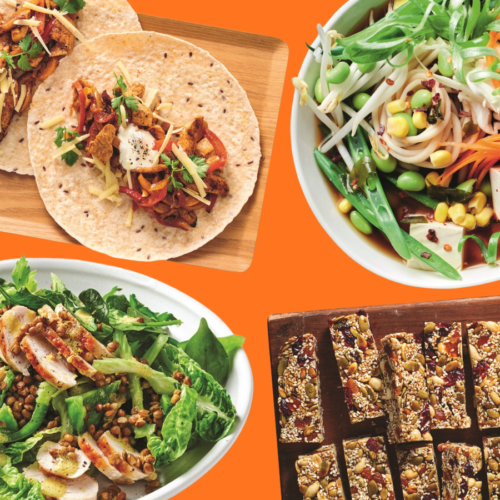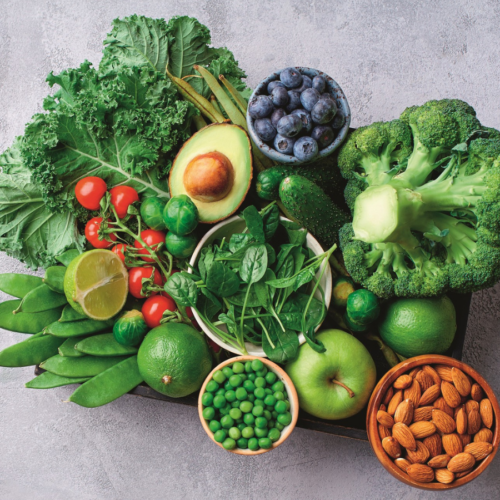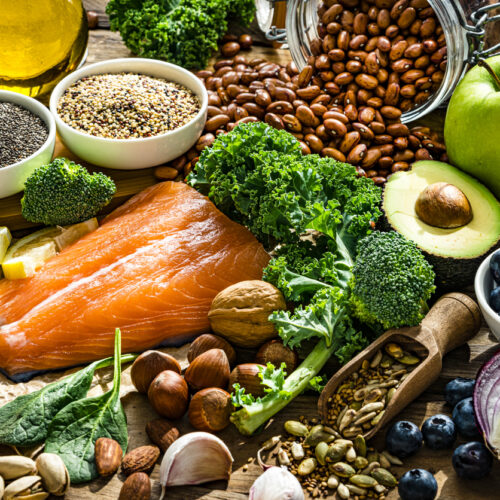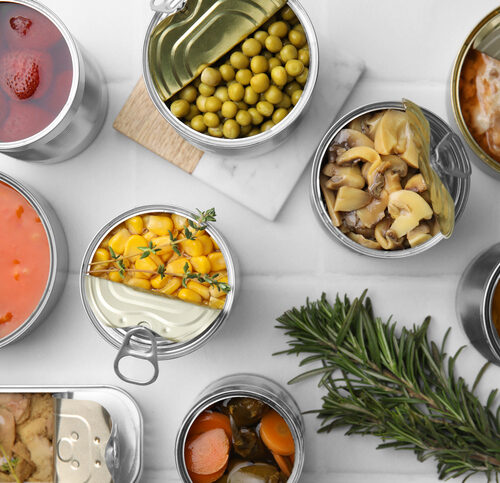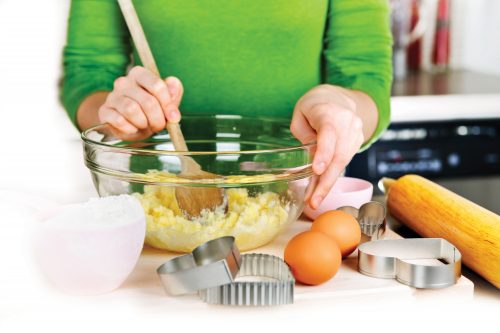
These tips will have you turning out perfect healthy baking every time.
Tips for successful healthy baking
- Always measure out all ingredients before you start. And always sieve flour before adding.
- Use accurate measurements: 1 cup means a level cup and 1 teaspoon a level teaspoon. In Healthy Food Guide, our cup measurements are loosely-packed cups, so spoon dry ingredients into cups or you could easily over-measure.
- Always preheat the oven to the temperature stated.
- Non-stick tins, pans and trays or flexible silicon bakeware are healthier cooking equipment choices.
- Invest in canola oil spray. It is great for greasing baking tins.
- When folding in flour and fruits, use a large metal spoon. Add the flour using a figure-of-8 movement.
- Don’t over-mix, especially when using low-fat cooking methods, or you could end up with a tough textured cake or baked sweet item. Mix gently only until ingredients are just combined.
- To check if large cakes are cooked, stick a skewer into the cake’s centre. If it comes out clean, the cake is done.
- Cooking times are guidelines and vary slightly depending on your oven. Fan-assisted ovens are faster, so check halfway through the prescribed cooking time and don’t be afraid to cook for less or more time.
Tips for adapting regular recipes to be more healthy
- Using apple purée is a great way to add moisture to lower-fat cakes. You will find purée in the chutney aisle or with canned fruits in the supermarket. If making a sponge-style cake, try replacing half of the fat with the same weight in apple purée.
- Use puréed canned peaches or mashed bananas in the same way as puréed apples. In cakes, a half-and-half substitution for fat works well, for example: if the cake has 200g butter, reduce this to 100g reduced-fat spread and add 100g apple or peach purée or mashed bananas.
- Wholemeal flour can substitute for white flour in baking and adds fibre. Experiment with recipes: start by replacing one-quarter of the white flour with wholemeal flour. Up to two-thirds of the flour in most recipes could be wholemeal.
- Reduced-fat spread will work instead of butter in most cakes and slices. Use spread with 60 per cent fat or more. The very low-fat spreads are not suitable for baking.
- Grated fruit and vegetables such as apple, carrot, courgette and beetroot can replace some of the sugar and fat in baking recipes.
How to cut the sugar in your baking
Sugar can be essential to the texture, colour and body of various foods but often you can reduce the amount in the recipe by one-quarter to one-third without noticing. Use these guidelines to reduce sugar when baking:
- Cakes and biscuits: 1/2 cup sugar to 1 cup flour
- Muffins and breads without yeast: 1 tablespoon sugar to 1 cup flour
- Breads (with yeast): 1 teaspoon sugar to 1 cup flour
- Added chocolate: reduce the amount and add some cocoa
Other ways to reduce sugar include using:
- Fruit purée
- Spices that sweeten: cardamom, coriander, ginger, mace, nutmeg
- Essences that sweeten: peppermint, vanilla
- Alternative sweetener (read the label to make sure it’s suitable and to use the right amount)
Quick substitution guide
| INSTEAD OF | TRY THIS |
| Milk | Trim milk |
| Cream |
Light evaporated milk; thick low-fat yoghurt; ½ ricotta cheese/½ trim milk mix |
| Coconut cream |
Light evaporated milk (coconut flavoured or add coconut essence) |
| Sour cream | Buttermilk; low-fat yoghurt; ½ ricotta cheese / ½ trim milk mix |
| Cream cheese |
Extra-light cream cheese spread; cottage cheese; ricotta cheese; quark |
| Cheddar cheese | Reduced-fat cheddar cheese; edam cheese; use 1 tablespoon parmesan cheese instead of ½ cup cheddar cheese |
| Pastry | Filo |
| Self-raising flour | Plain flour plus baking powder — 1 teaspoon baking powder per 1 cup flour |
| Butter, margarine, oil |
Substitute half the fat with apple purée (and reduce the amount of added sugar as well); use reduced-fat spread (at least 60 per cent fat for baking) |
Healthy baking troubleshooting
| PROBLEM | POSSIBLE CAUSES |
|
Top crust of cake is hard |
Baking temperature too high Baking time too long |
|
Cake has a collapsed centre |
Oven temperature too low Under-baked Too much sugar or liquid Pan is too small for cake Baking soda or powder past its expiry date Oven opened during baking |
| Cake is tough |
Batter over-mixed Too much flour (over-measured) or too many eggs Too little sugar or fat |
|
Cake is heavy or dense |
Batter over-mixed Too much liquid, fat or egg Too little flour, baking powder or soda (under-measured) |
|
Cake domes in the middle |
Oven too hot at beginning of baking Too much baking powder or soda (over-measured) |
| Cake is dry | Too much flour (over-measured) |
|
Cake sticks to side of tin |
Pan not greased enough Cake turned out of pan too soon Cake cooled too long in pan |
|
Biscuits or cookies spread |
Baking tray greased when not necessary Mixture placed on warm baking tray Baking temperature too low |
| Biscuits or cookies are hard and dry |
Over-baked Not enough liquid Oven not preheated |
|
Muffins have dry tunnels |
Too little liquid Batter over-mixed Muffins overbaked or oven too hot |
|
Muffins have pointy tops |
Batter over-mixed |
www.healthyfood.com


